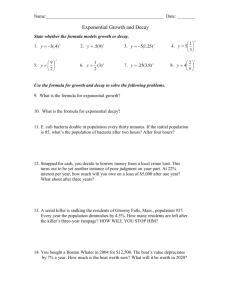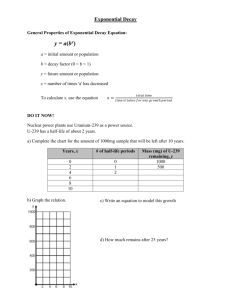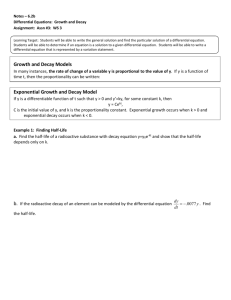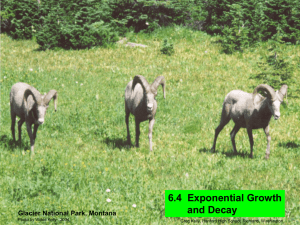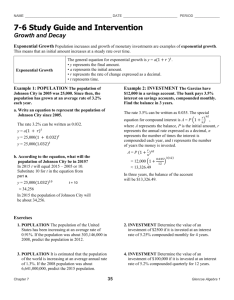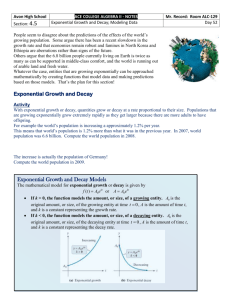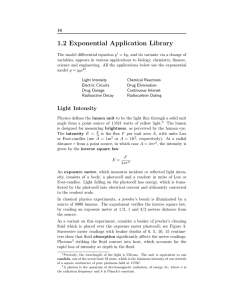Lesson 1-2: Rational Exponents
advertisement
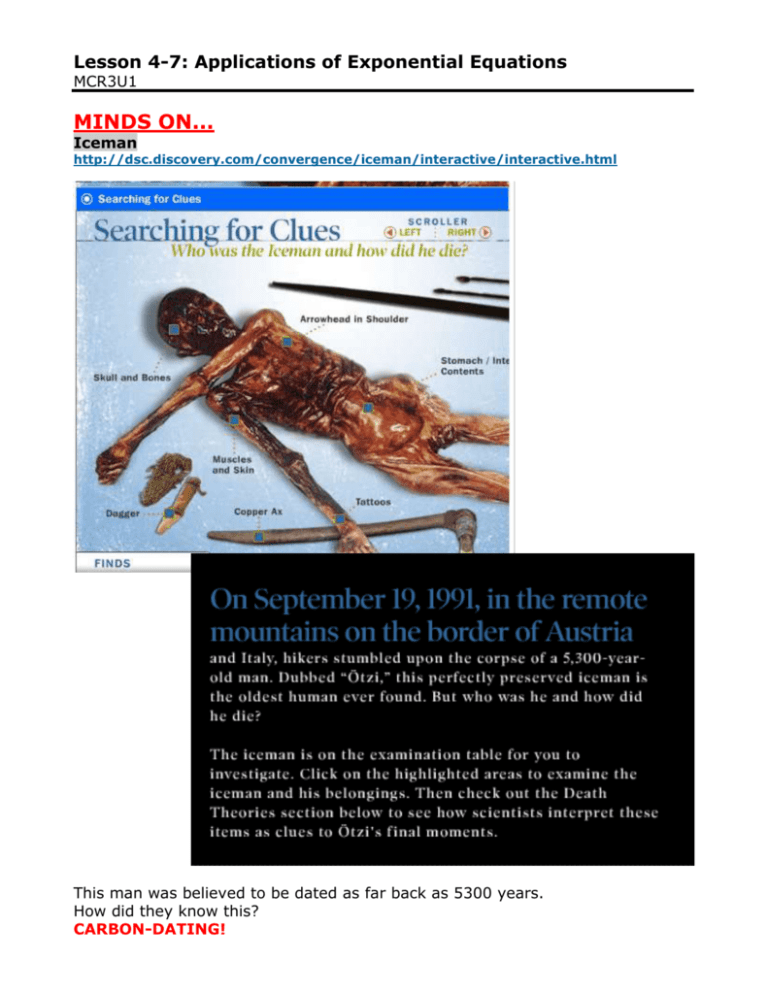
Lesson 4-7: Applications of Exponential Equations MCR3U1 MINDS ON... Iceman http://dsc.discovery.com/convergence/iceman/interactive/interactive.html This man was believed to be dated as far back as 5300 years. How did they know this? CARBON-DATING! Carbon Dating (From: Howstuffworks.com) Carbon-14 dating is a way of determining the age of certain archaeological artefacts of a biological origin up to about 50,000 years old. It is used in dating things such as bone, cloth, wood and plant fibres that were created in the relatively recent past by human activities. Carbon-14 is radioactive, with a halflife of about 5,700 years. As soon as a living organism dies, it stops taking in new carbon. The ratio of carbon-12 to carbon-14 at the moment of death is the same as every other living thing, but the carbon-14 decays and is not replaced. The carbon-14 decays with its half-life of 5,700 years, while the amount of carbon-12 remains constant in the sample. By looking at the ratio of carbon-12 to carbon-14 in the sample and comparing it to the ratio in a living organism, it is possible to determine the age of a formerly living thing fairly precisely. Using Mathematics to Date a Fossil We use the half-life formula: Half –life follows an exponential decay model: t 1 h M c 2 M Final Mass c Initial Mass t time h half-life General Formula for Growth and Decay: At = Ao(b)n At = final amount Ao = initial amount b = growth or decay factor = 1± r (r= rate of growth or decay) n = # of periods = total elapsed time = t period p Lesson 4 - : Applications of Exponential Functions MCR3U1 Many real life applications can be modeled with exponential growth or decay functions. Recall: y y x x Exponential (b>1) Exponential (0< b<1). The exponential function f ( x) ab can be used to solve problems involving growth and decay. The function is usually written in a more useful general form as: x AF Ao (b) t p , where AF = final amount Ao = original or initial amount b = growth/decay factor = 1 + growth rate or = 1 - decay rate Exponential Growth Formula Ex. Af Ao (2) t d where d = doubling time time t = = number of growth/decay periods period length p (Note: t and p must have same units) Exponential Decay Formula. Ex. 1 Af Ao 2 t h where h = half-life Ex.1: There are now 400 termites in a colony. If the population of the colony triples every two months, how many termites will there be in 6 months? How many were there one month ago? Ex.2: Radium-226 is a radioactive element with a half-life of 1600 years. How much of a 500 g sample of the element will be present after 4000 years? Ex.3: You uncover a dinosaur bone in your backyard! After some further research, you find out that the initial mass of carbon-14 in the bone was 384 mg. Further testing reveals the remaining mass of carbon-14 in the bone today is 6 mg. How old is the bone? (C-14 has a half-life of 5700 years.) Ex.4: There are now 5000 yeast cells in a culture. The number of cells grows at a rate of 25% per day. How many cells will there be one week later? Ex.5: The price of a Volkswagen Golf is $28,500. Its value depreciates by 10% each year. What is the depreciated value of the car after 4 years? Homefun: p. 261 #1-3, 5-7, 9, 10, 11
